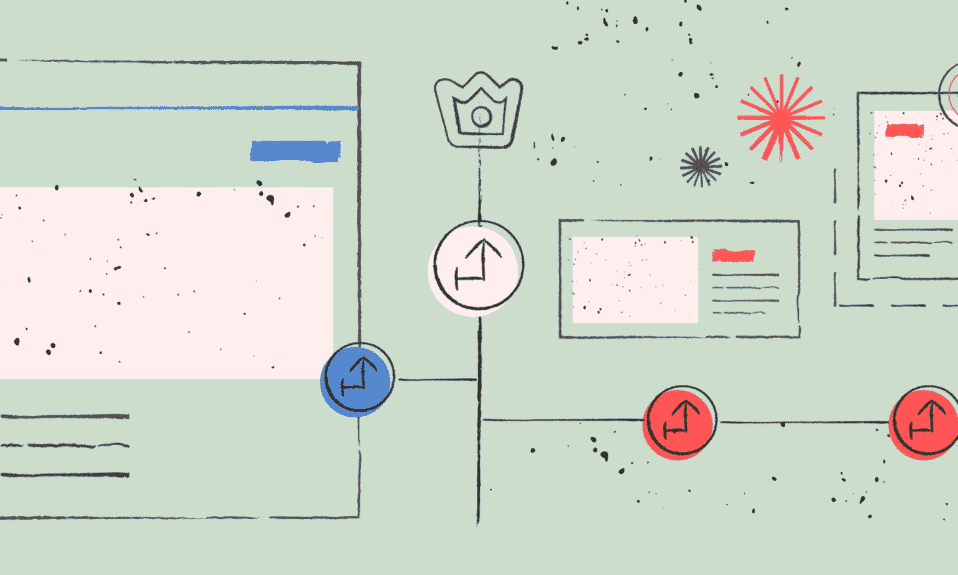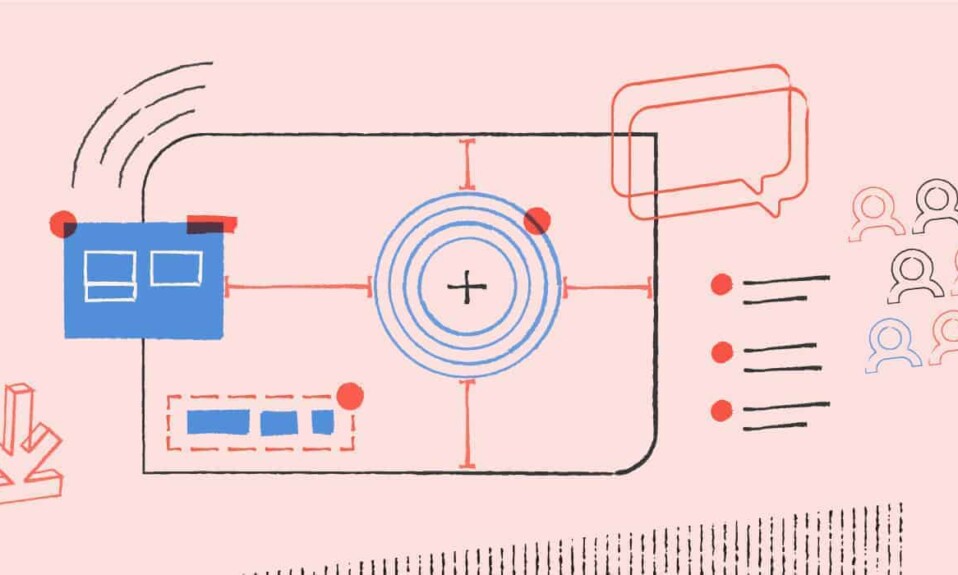TL;DR:
Predictive Continuity Mapping empowers AI product managers to build context-aware, multi-agent systems that “remember with purpose.” By combining context engineering and continuity strategies, AI systems deliver personalized, coherent, and actionable insights across workflows. This approach reduces friction, strengthens user trust, and transforms enterprise AI from reactive prediction to intelligent, anticipatory decision-making.
The Hidden Cost of Context Loss
Picture this: you’re three screens into a live product demo. You’ve just shown how a sourcing assistant detects supplier risk, recommends alternatives, and updates contract terms. Then your customer asks the assistant to summarize what happened so far. The assistant replies, “How can I help?” and forgets the supplier completely. The demo pauses, and confidence fades instantly.
This isn’t a random glitch. Instead, it’s a symptom of lost context.
Now imagine a procurement dashboard. You filter suppliers by region, spend band, and contract status. However, as soon as you move to the insights tab, your filters reset. You must reapply everything. Consequently, your focus breaks, and valuable insight disappears.
Whenever context breaks, two things happen in parallel. First, users lose trust because they expect the product to “remember.” Second, AI performance drops because predictions lose grounding. Therefore, responses become repetitive, confusing, or wrong.
For AI-native products, context loss is not cosmetic; it’s structural. Systems depend on continuity between user inputs, data models, and agent handoffs. Yet, stateless APIs, fragmented services, and stale embeddings interrupt that flow. As a result, each interaction starts from zero.
Moreover, this creates ripple effects. Users stop believing the system understands them. PMs struggle to track intent. Engineers deploy temporary patches instead of long-term solutions. Consequently, the overall product experience weakens.
Therefore, continuity becomes strategic, not optional. Predictive Continuity Mapping (PCM) introduces a better approach — one where the system predicts what context should persist and carries it forward intelligently.
The Context Problem in Modern AI Products
For every AI product manager, context loss is a persistent challenge. Modern AI-native systems often fail to carry relevant information across modules, workflows, and agents. Consequently, users repeat inputs, AI predictions degrade, and business decisions rely on incomplete signals. Predictive Continuity Mapping becomes crucial here, as it enables AI product managers to design systems that anticipate which context should persist. Without it, even high-performing models lose coherence.
Causes of Context Breakage — Technical Roots and Behavioral Friction
AI product managers know that modular architectures can fragment context. Stateless APIs treat each request independently. Consequently, services repeatedly re-fetch or re-ask for user state. Meanwhile, microservices maintain isolated datasets. Therefore, silos appear, even when integration exists.
Batch pipelines and delayed updates exacerbate the problem. As a result, predictive models make decisions on stale information. Embedding stores often lack refresh rules, so similarity searches return outdated context. AI product managers must also consider organizational behavior. Engineering teams often prioritize velocity over continuity, leading to temporary fixes instead of long-term solutions. Predictive Continuity Mapping directly addresses these gaps by anticipating which context is relevant for future workflows.
Concrete Impacts — Users, Models, and Business Metrics
Context loss directly affects user experience. Users repeatedly re-enter filters or restate requests. Consequently, task completion slows, and frustration rises. AI models misclassify intent and generate noisy predictions when context disappears. Therefore, downstream automation fails more often.
Analytics also suffer. Repeated inputs inflate event counts and obscure meaningful trends. As a result, data scientists chase misleading patterns. Product metrics decline: retention drops, time-to-value lengthens, and support tickets increase. Business decisions lag when spend planning or procurement modules miss critical insights. Predictive Continuity Mapping ensures AI product managers maintain continuity, enhancing both AI performance and operational outcomes.
Why Solving Context Loss Is Hard — Trade-offs and Pitfalls
AI product managers face trade-offs between latency and completeness. Fetching broad context increases response time, while minimal context reduces prediction accuracy. Therefore, smart prioritization is critical.
Naive memory approaches fail at scale. Storing all events creates noise and raises retrieval costs. Consequently, predictive pruning and indexing are essential. Cross-team coordination also matters. Without shared context contracts, continuity decays across handoffs. Governance and privacy requirements add complexity. Finally, balancing short-term fixes with long-term architecture remains a challenge. Predictive Continuity Mapping gives AI product managers a systematic method to preserve context without sacrificing performance or compliance.
Defining Predictive Continuity Mapping (PCM)
Predictive Continuity Mapping is a framework that allows AI product managers to design systems that retain, anticipate, and propagate context across workflows, modules, and agents. Unlike traditional memory storage, Predictive Continuity Mapping does not store all data indiscriminately. Instead, it predicts which context will remain relevant and ensures it flows seamlessly across the product ecosystem. For AI product managers, Predictive Continuity Mapping is both a design philosophy and an intelligence strategy.
In essence, Predictive Continuity Mapping solves one central problem: AI systems often operate in stateless or siloed environments. Users expect continuity, models require history, and business workflows depend on consistent information. Predictive Continuity Mapping addresses this by combining context capture, predictive prioritization, and continuity enforcement.
Consider a source-to-pay system where spend analytics identifies a sudden risk in a supplier’s performance. Without Predictive Continuity Mapping, downstream modules like sourcing or contract management may never see that insight. As a result, decisions rely on outdated assumptions. Predictive Continuity Mapping ensures that relevant supplier risk context flows to every stage of the workflow automatically, reducing friction and enhancing predictive intelligence.
Core Components of Predictive Continuity Mapping
AI product managers can break Predictive Continuity Mapping into three foundational layers:
1. Context Capture: This involves identifying which data, events, and user intents matter. Product managers define relevance rules and priority signals. In source-to-pay, this could include supplier performance scores, contract exceptions, or approval bottlenecks. Capturing context accurately is critical because irrelevant information increases noise and reduces model accuracy.
2. Predictive Prioritization: Predictive Continuity Mapping predicts which captured context remains relevant for future interactions. Machine learning models or heuristic rules assign weight to each context element. For example, a large variance in spend forecast carries higher predictive importance than routine purchase orders. Predictive prioritization allows AI product managers to filter and forward only meaningful signals, reducing computational load and improving decision reliability.
3. Continuity Enforcement: This layer ensures that prioritized context flows seamlessly across workflows, modules, and agents. In source-to-pay, insights from spend analytics propagate to procurement negotiations, supplier risk scoring, and payment approvals. Continuity enforcement integrates memory stores, embedding retrieval systems, and agent orchestration to maintain persistent context.
By integrating these layers, Predictive Continuity Mapping allows AI product managers to maintain coherent intelligence across multi-agent systems, enhancing user trust, system reliability, and predictive power.
Predictive Continuity Mapping vs Traditional State Management
Traditional state management approaches rely heavily on static storage or session-based memory. Systems either store everything or store nothing. Both extremes create problems:
- Over-storage: Floods retrieval pipelines with irrelevant data. Similarity searches or vector embeddings surface outdated context. Models misinterpret user intent.
- Under-storage: Forces repeated user input, increases friction, and weakens downstream decision-making.
Predictive Continuity Mapping solves this by actively predicting relevance. It combines signals from AI models, historical workflows, and business rules to decide which context should persist. For example, in a source-to-pay system, a supplier’s delayed delivery history may predict risk in future contract renewals. Predictive Continuity Mapping ensures that this context is available in spend planning, sourcing, and payment workflows without manual handoff.
Moreover, Predictive Continuity Mapping enables cross-agent consistency. In multi-agent systems, one agent’s output informs another without requiring repeated querying. Consequently, AI product managers can design intelligent workflows that anticipate user needs and reduce cognitive load across touchpoints.
Context Types in Predictive Continuity Mapping
AI product managers must understand that not all context is equal. Predictive Continuity Mapping differentiates among three primary types:
1. Entity Context: Information about objects or participants, such as suppliers, contracts, or purchase orders. In source-to-pay, a supplier’s risk rating is entity context that must flow across analytics, procurement, and payment modules.
2. Intent Context: Tracks user or system intentions. For example, a procurement agent may intend to renegotiate a contract due to changing spend patterns. Predictive Continuity Mapping captures this intention and ensures subsequent agents act with that intent in mind.
3. Environmental Context: Captures workflow or system state, such as project timelines, approval thresholds, or organizational policies. Environmental context allows Predictive Continuity Mapping to adjust priorities dynamically. For example, if a budget constraint emerges, predictive continuity ensures spend insights propagate to negotiation and approval modules immediately.
By differentiating context types, AI product managers can prioritize signals effectively, reduce noise, and maintain predictive coherence across the platform.
Technical Architecture of Predictive Continuity Mapping
The technical implementation of Predictive Continuity Mapping often involves three integrated components:
- Context Repositories: These store structured and unstructured context elements. Repositories may use vector embeddings, relational databases, or hybrid storage depending on volume and retrieval needs.
- Predictive Relevance Engine: A machine learning or rules-based system scores context elements for relevance. For example, supplier risk anomalies carry higher weight than routine invoices.
- Continuity Orchestrator: Ensures context flows across modules and agents in real time. Orchestrators use APIs, event buses, or agent communication layers to maintain coherence.
In a source-to-pay example, the continuity orchestrator ensures that spend variance detected in analytics triggers alerts in contract negotiation modules and informs the payment approval workflow automatically. This reduces manual effort and improves predictive reliability.
Why Predictive Continuity Mapping Matters for AI Product Managers
For AI product managers, Predictive Continuity Mapping is not merely a technical concept; it is a strategic enabler. It allows teams to design multi-step, multi-agent experiences where context persists intelligently, decisions remain coherent, and insights flow seamlessly. Consequently, AI systems behave like collaborative partners rather than disconnected tools. Following are the key advantages of Predictive Continuity Mapping for AI product managers:
AI Systems That “Remember with Purpose”
For AI product managers, Predictive Continuity Mapping enables AI systems to remember context intelligently. Unlike traditional memory, it predicts which signals matter for future workflows. Consequently, AI outputs remain accurate, actionable, and consistent across modules and user interactions.
The process starts with context capture, identifying critical signals like supplier performance, contract exceptions, or approval delays in source-to-pay workflows. Predictive prioritization then determines which signals remain relevant for upcoming steps. For example, a significant variance in spend forecast carries more weight than routine transactions, ensuring models focus on impactful insights.
As a result, users no longer repeat information across sessions or modules. For instance, a supplier risk flagged during sourcing automatically informs contract negotiation and payment approval modules. This reduces cognitive load, accelerates decision-making, and strengthens trust in AI outputs.
Furthermore, Predictive Continuity Mapping adapts dynamically. When workflows change, the system recalibrates which context persists. This transforms AI systems from reactive tools into intelligent collaborators, delivering coherent multi-step experiences and improving predictive reliability across complex enterprise environments.
Seamless Handoffs Across Workflows
For AI product managers, Predictive Continuity Mapping ensures insights propagate seamlessly across workflows and modules. Rather than requiring users to re-enter information, AI systems automatically transfer relevant context, maintaining continuity and coherence.
The process begins with capturing and prioritizing meaningful signals. For example, in a source-to-pay system, supplier risk insights identified by spend analytics automatically flow into sourcing and contract negotiation modules. As a result, downstream agents have full situational awareness without additional user input.
This seamless handoff reduces friction and prevents decision gaps. Procurement teams can act on updated risk assessments immediately, while contract managers receive relevant context without delay. Consequently, workflow efficiency increases, and errors from missing information decrease.
Moreover, Predictive Continuity Mapping adapts dynamically across multi-agent systems. When new events occur, the system recalibrates which context must propagate to maintain coherence. This ensures AI models remain informed, workflows remain synchronized, and decisions remain predictive rather than reactive.
For AI product managers, designing seamless handoffs transforms systems into intelligent collaborators. It strengthens trust, improves user experience, and enables more reliable, context-aware decision-making across complex enterprise workflows.
Context-Aware Personalization at Scale
For AI product managers, context engineering, together with Predictive Continuity Mapping, enables AI systems to deliver context-aware personalization at scale. By carefully designing how context is captured, structured, and propagated, the system dynamically tailors recommendations based on entity context, user intent, and environmental factors. Consequently, every interaction feels relevant, timely, and actionable, reflecting both engineered context structures and continuity-aware predictions.
The process begins with capturing critical signals from workflows, such as supplier performance, budget constraints, or contract exceptions in source-to-pay systems. Predictive prioritization then determines which context elements should influence recommendations. For example, if a supplier shows recurring delays, the AI system may suggest alternative sourcing options automatically. This ensures decisions remain proactive and aligned with organizational goals.
Moreover, Predictive Continuity Mapping allows AI product managers to design experiences that anticipate user needs without manual intervention. The system continuously adjusts recommendations as new events occur, keeping workflows synchronized and reducing cognitive load for users.
By applying this approach, organizations enhance adoption and engagement. Users trust AI systems that understand their context, while workflows gain efficiency and accuracy. For AI product managers, context-aware personalization at scale transforms AI systems from static tools into intelligent collaborators, delivering coherent, adaptive, and predictive experiences across complex enterprise environments.
Reduced Friction and Stronger User Trust
For AI product managers, Predictive Continuity Mapping reduces friction and strengthens user trust by ensuring continuity of insight across modules and sessions. Users no longer encounter repetitive prompts or fragmented workflows, making the system feel intelligent and responsive.
The system captures, prioritizes, and propagates relevant context in real time. Consequently, insights flow seamlessly from one module to another. For example, in source-to-pay workflows, supplier risk updates detected in analytics automatically inform sourcing, contract negotiation, and payment modules. Users experience a coherent journey, while AI agents operate with full situational awareness.
This continuity makes the experience consistent, reliable, and predictable. Users trust the AI to maintain historical knowledge and anticipate needs without constant manual input. Predictive Continuity Mapping allows AI product managers to proactively surface critical information, highlighting risks, exceptions, or opportunities at the right time.
As a result, decisions become faster and more confident. Operational efficiency improves, errors decrease, and users perceive the AI as a capable collaborator rather than a static tool. For AI product managers, designing for frictionless continuity is essential to building high-trust, multi-agent, predictive experiences across complex enterprise workflows.
Applying Predictive Continuity Mapping in Practice
Implementing Predictive Continuity Mapping transforms abstract principles into actionable strategies. AI product managers can structure workflows, prioritize context, and orchestrate multi-agent interactions effectively. Each application demonstrates how context flows across modules, enabling predictive intelligence, reducing friction, and improving decision-making in enterprise systems. Below are four practical approaches with source-to-pay examples.
Context Capture and Prioritization
The first step involves capturing relevant context and predicting which elements will remain valuable. AI product managers define relevance rules, filtering signals that impact downstream workflows. This ensures AI outputs remain actionable, reduces computational noise, and improves decision reliability. Captured context can include user intent, entity attributes, or environmental factors.
Predictive prioritization ranks signals by impact. For example, supplier risk scores or unusual spend patterns gain higher weight than routine transactions. This allows AI models to focus on information that drives meaningful outcomes.
Example (Spend Analytics)
A spend analytics module detects a sudden 25% variance in quarterly supplier costs. Predictive Continuity Mapping ensures this insight flows automatically to procurement and budgeting modules. As a result, sourcing teams can preemptively adjust orders, contract managers can review terms, and finance teams anticipate budget implications without repeated input.
Seamless Multi-Agent Orchestration
AI product managers implement orchestration layers that enable context to propagate across agents and modules. This guarantees consistent understanding, reduces duplicated work, and maintains coherence across workflows. Orchestration integrates context repositories, predictive engines, and workflow triggers.
Dynamic propagation ensures that when new information emerges, all dependent agents receive updates in real time. This approach supports intelligent handoffs, preserves situational awareness, and allows AI agents to collaborate effectively without human intervention.
Example (Ordering):
An ordering system flags delayed delivery from a key supplier. Predictive Continuity Mapping pushes this context to inventory management, logistics, and supplier communication modules. As a result, replenishment schedules adjust automatically, alerts reach warehouse teams, and purchasing agents explore alternative sources proactively, avoiding stockouts and minimizing operational disruption.
Context-Aware Personalization
Predictive Continuity Mapping allows AI systems to tailor outputs based on entity context, user intent, and environmental factors. AI product managers can design personalized workflows that anticipate user needs, streamline approvals, and reduce repetitive actions.
Personalization also enables predictive insights to adapt dynamically as workflows evolve. Users receive relevant suggestions without manual configuration, which enhances efficiency, engagement, and trust.
Example (Sourcing):
During supplier selection, sourcing agents receive automated recommendations based on past performance, contract terms, and spend priorities. Predictive Continuity Mapping ensures each recommendation considers historical supplier interactions and current procurement goals. Consequently, sourcing decisions are optimized, negotiations are more informed, and supplier selection aligns with organizational strategy.
Continuous Feedback and Improvement
Implementing Predictive Continuity Mapping requires continuous monitoring and feedback. AI product managers analyze which context signals drive outcomes, refine prioritization, and adjust propagation rules. This iterative approach ensures models remain aligned with evolving business needs.
Feedback loops allow AI systems to self-correct, improving both predictive accuracy and workflow efficiency. Over time, continuity becomes smarter, and multi-agent collaboration strengthens.
Example (Contract Management):
A contract management module identifies clauses at risk of non-compliance due to supplier changes. Predictive Continuity Mapping pushes alerts to legal, procurement, and finance teams. After analyzing outcomes, AI models learn which signals are most predictive for risk mitigation, refining future contract alerts. As a result, compliance improves, decision-making accelerates, and enterprise risk decreases.
Predictive Continuity Mapping in the Age of Multi-Agent AI Systems
In AI-native ecosystems, enterprises increasingly deploy multi-agent systems to handle complex workflows. Each agent—whether conversational analytics, autonomous procurement, or predictive planning—requires access to shared memory. Without continuity, outputs become fragmented, inconsistent, or misleading. Predictive Continuity Mapping ensures agents operate on a unified context layer, maintaining coherence across workflows. It enables intelligent orchestration, reduces hallucinations, and strengthens cross-agent collaboration, forming the backbone of enterprise AI intelligence. AI product managers must integrate Predictive Continuity Mapping strategically to enable scalable, reliable, and context-aware multi-agent systems.
Unified Memory Across Agents
In multi-agent AI systems, each agent often processes events independently. Without a shared memory layer, the same context may exist in one agent but remain invisible to others. Predictive Continuity Mapping establishes a centralized context repository accessible across agents. AI product managers define which signals propagate, ensuring relevant context remains synchronized.
For example, conversational analytics agents can reference historical user queries while workflow automation agents execute tasks based on the same intent context. By sharing unified memory, the system avoids redundancy and preserves continuity. Agents dynamically update this memory as new events occur, allowing downstream agents to access real-time, accurate context.
Unified memory also mitigates conflicts in decision-making. Multiple agents working on related tasks can align outputs with enterprise policies, predictive models, and user intent. This prevents inconsistencies, reduces errors, and strengthens trust. AI product managers monitor memory health, implement prioritization rules, and optimize retrieval latency.
Ultimately, unified memory ensures agents act cohesively, fostering predictive, context-aware, and reliable AI-driven experiences. It forms the foundation for orchestration, enabling multi-agent workflows to scale while maintaining operational intelligence.
Preventing Hallucinations and Disjointed Outputs
Multi-agent AI systems risk producing hallucinations or inconsistent outputs when context fragments across agents. Predictive Continuity Mapping mitigates this risk by enforcing context integrity and relevance scoring. Each agent evaluates whether incoming context aligns with prior knowledge and business rules.
For instance, autonomous sourcing and spend analytics agents may interpret the same supplier differently without shared context. Predictive Continuity Mapping ensures that both agents reference the same supplier performance metrics, historical interactions, and contractual constraints. Consequently, outputs remain aligned, reducing errors caused by misinterpreted or partial data.
AI product managers implement continuous validation layers that cross-check agent outputs against master context. They also define relevance thresholds to prioritize signals most likely to affect decisions. As a result, hallucinations diminish, decision quality improves, and workflow reliability increases.
Moreover, context reconciliation allows agents to detect conflicts proactively. If two agents propose contradictory actions, the orchestrator flags inconsistencies and triggers review workflows. This preemptive alignment maintains system intelligence and strengthens user trust in AI-driven recommendations.
Context Orchestration as the Backbone of Enterprise Intelligence
Context orchestration enables seamless coordination between multiple agents while maintaining predictive accuracy. Predictive Continuity Mapping provides AI product managers with a structured framework to manage context flow, dependencies, and priorities across enterprise modules.
Orchestration integrates memory repositories, predictive relevance engines, and workflow triggers. Agents can subscribe to specific context streams and receive updates in real time. This ensures continuous awareness of relevant events, user intents, and environmental changes.
For example, in autonomous procurement, orchestration coordinates spend analytics, sourcing, and contract modules. When a budget variance occurs, orchestrated context propagation alerts contract managers, sourcing agents, and finance modules simultaneously. Agents act coherently, guided by unified memory, and avoid duplicated or conflicting actions.
By enabling predictive continuity, context orchestration forms the backbone of intelligent enterprise systems. It allows AI product managers to scale multi-agent workflows confidently, maintain accuracy, and optimize predictive performance across interconnected modules.
Real-Time Dynamic Adaptation
Multi-agent AI systems operate in fast-changing environments. Predictive Continuity Mapping supports real-time adaptation by continuously updating context and reprioritizing signals based on evolving workflows. Agents respond immediately to critical events without manual intervention.
Dynamic adaptation uses event-driven triggers, temporal decay of less relevant signals, and priority scoring. AI product managers configure these mechanisms to prevent overload while preserving critical context. Agents thus remain agile, informed, and predictive.
For example, if a supplier misses a delivery milestone, predictive prioritization ensures this context flows immediately to procurement, ordering, and contract modules. Agents adjust workflows proactively, mitigating downstream risks and preserving operational efficiency.
Real-time adaptation also supports learning loops. Agents observe outcomes, refine relevance models, and optimize context propagation continuously. This ensures the multi-agent ecosystem remains coherent, predictive, and capable of handling complex enterprise decisions effectively.
Multi-Agent Context Management using Predictive Continuity Mapping in Source-to-Pay (example)
Problem Statement: In a source-to-pay system, spend analytics, sourcing, ordering, and contract modules operate independently. Supplier performance anomalies in spend analytics often fail to propagate, causing delayed decisions, repeated manual checks, and inconsistent outputs across procurement workflows.
Solution via Predictive Continuity Mapping: Predictive Continuity Mapping establishes a unified memory layer accessible to all agents. When spend analytics detects a supplier risk, the context propagates to sourcing, ordering, and contract modules in real time. Predictive prioritization ensures high-impact signals, such as delayed shipments or cost deviations, are highlighted. Agents adjust workflows accordingly: sourcing considers alternative suppliers, ordering reschedules deliveries, and contract modules flag clauses at risk.
Outcome: Decision gaps disappear, operational friction reduces, and predictive accuracy increases across modules. Multi-agent outputs remain coherent, automated actions are synchronized, and AI product managers gain observability into cross-module context flow. The enterprise achieves faster, reliable, and context-aware procurement processes.
Measuring Success of Predictive Continuity Mapping
To evaluate the impact of Predictive Continuity Mapping, AI product managers rely on metrics that track context retention, multi-agent coherence, and user outcomes. Success is not only technical but also operational, reflecting improved decision-making, reduced friction, and predictive reliability across enterprise workflows. Below are key KPIs and measurement strategies for product managers.
Context Retention Accuracy
Measures the percentage of relevant context preserved across modules and agents. High accuracy indicates predictive prioritization effectively retains critical signals.
Multi-Agent Output Coherence
Evaluates alignment between outputs from different agents handling the same workflow. High coherence reduces contradictions and ensures consistent AI-driven decisions.
Operational Efficiency Gains
Tracks reductions in manual interventions, repeated inputs, or decision latency. High efficiency reflects seamless workflows and reduced cognitive load for users.
User Trust and Adoption Metrics
Assesses reliance on AI recommendations, adherence rates, and repeated engagement. High adoption shows users trust context-aware, predictive AI systems confidently.
Predictive Accuracy Improvement
Measures improvement in AI predictions due to retained and propagated context. Higher predictive accuracy demonstrates better-informed, actionable outputs for enterprise decisions.
Workflow Completion Rate
Tracks the percentage of tasks completed successfully across multi-agent workflows. A higher rate indicates effective context propagation and reduced friction.
Context Utilization Ratio
Measures the proportion of captured context actively used in downstream decisions. High utilization confirms predictive prioritization effectively filters for impactful signals.
Reduction in Decision Latency
Tracks time saved in multi-step workflows due to continuous context propagation. Lower latency improves operational efficiency and accelerates enterprise decision-making.
Cross-Agent Consistency Score
Assesses alignment of outputs across agents within the same workflow. Higher consistency reduces contradictions, errors, and the need for manual reconciliation.
Predictive Continuity Mapping as The Strategic Future of AI-Native Products (Conclusion)
As AI-native products become more complex, continuity emerges as a core differentiator. AI product managers who harness Predictive Continuity Mapping can build systems that are truly intelligent, coherent, and context-aware.
Predictive Continuity Mapping as a Strategic Product Principle
Predictive Continuity Mapping isn’t just a technical concept—it represents a strategic product design principle. For AI product managers, mastering continuity transforms how they conceive, build, and scale AI-native products. It allows multi-agent systems, autonomous workflows, and predictive analytics to operate coherently, reducing friction and enhancing reliability.
By integrating Predictive Continuity Mapping, AI product managers design systems that “remember with purpose,” anticipate user needs, and propagate critical context across workflows. This ensures outputs remain consistent, actionable, and aligned with enterprise objectives. Users experience intelligent systems that reduce cognitive load, improve decision-making, and foster trust across complex enterprise workflows.
The Product Manager’s New Superpower
Understanding continuity empowers AI product managers to orchestrate agents effectively, prioritize meaningful context, and avoid hallucinations or disjointed outputs. Systems become not only predictive but also context-aware, adaptive, and resilient to dynamic enterprise environments.
AI product managers who embrace Predictive Continuity Mapping gain a new superpower: the ability to craft multi-agent, predictive, and coherent experiences at scale. This bridges the gap between raw AI capability and truly intelligent enterprise products, delivering measurable operational and strategic benefits.
The future of AI-native products won’t just depend on prediction—it will depend on remembering what matters.
Reference Content
- UI/UX Patterns for AI Products: Series 7- Managing Context Continuity – This piece explores how context is retained and managed over time in AI products, offering insights into designing interfaces that support continuous user interactions.
- Giving AI Agents Memory: Architecting Intelligence with Context, Continuity, and Cognition – This article discusses how memory enables AI agents to represent knowledge over time, recall experiences, and adapt behavior based on historical context, bridging the gap between reactive behavior and strategic intelligence.






